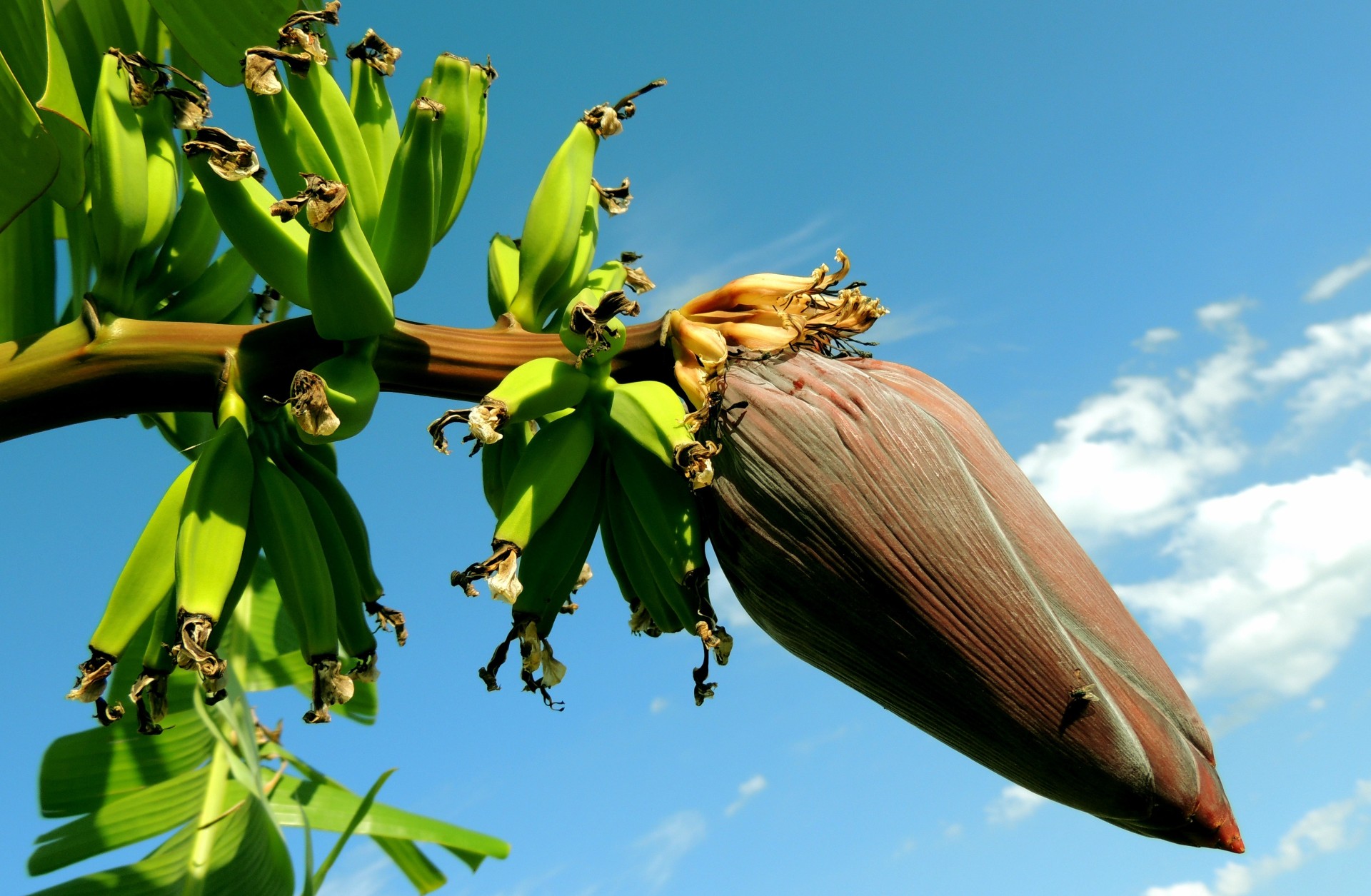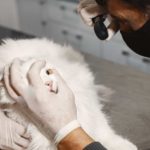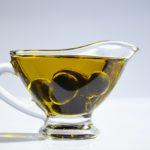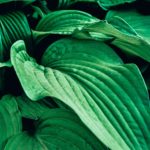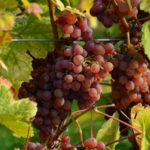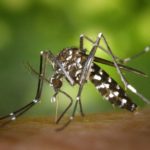M. S. IKBAL
Department of Entomology, Hajee Mohammad Danesh Science and Technology University, Dinajpur 5200, Bangladesh.
M. A. A. BACHCHU
Department of Entomology, Hajee Mohammad Danesh Science and Technology University, Dinajpur 5200, Bangladesh.
M. M. H. BHUYAIN
Department of Entomology, Hajee Mohammad Danesh Science and Technology University, Dinajpur 5200, Bangladesh.
M. N. UDDIN
Department of Entomology, Hajee Mohammad Danesh Science and Technology University, Dinajpur 5200, Bangladesh.
R. SULTANA
Department of Entomology, Hajee Mohammad Danesh Science and Technology University, Dinajpur 5200, Bangladesh.
ABSTRACT: Effect of six different weed extracts on the repellency and oviposition deterrent were conducted against cucurbit fruit fly, B. cucurbitae (Coq.) in the laboratory of the Department of Entomology, HSTU, Dinajpur, during July to December 2021. The study was carried out primarily with 5.0 % concentration for six weed extracts followed by two weed extracts with four concentrations (0.5, 1.0, 2.0 and 4.0 %) on bitter gourd fruit. Results indicated that the tested weed extracts not only cause repellent and oviposition deterrent effects against B. cucurbitae but also inhibited the progeny development. The lowest number of larvae (0.67) and pupae (0.67) recovery and adult emergence (0.33) was recorded from water pepper weed extract at 5.0% concentration followed by croton weed extract. The order of toxicity of the weed extracts based on repellency and oviposition deterrent was water pepper > croton > black nightshade > goat weed > common lucas > mexican poppy. However, progeny recovery, percent repellency and oviposition deterrent were found dose dependent manner. The highest repellency (53.05%) and oviposition deterrent (95.40%) were found in water pepper as against the lowest repellency (28.73%) and oviposition deterrent (44.96%) was in common lucas. The highest percent reduction of pupae recovery was observed in water pepper (97.53%) whereas the lowest was in mexican poppy weed extract (63.86%). The water pepper weed extract also showed the highest inhibition of adult emergence (98.72%). It is evident from the results that all the weed extracts caused a remarkable decrease in adult emergence, larvae and pupae recovery, and adult settling compared to control.
Keywords: Bactrocera cucurbitae, weed extract, repellent, oviposition deterrent, progeny development.
REFERENCES
AHMED, S. M., CHANDER, H. & PEREIRA, J. 1981. Insecticidal potential and biological activity of Indian indigenous plants against Musca domestica. Int. Pest Control. 23(6), 170-175.
BACHCHU, M. A. A., RAHMAN, M. H., SIDDIQUE, A. B., BHUYAIN, M. H. & ARA, R. 2017. Comparative evaluation of botanical extracts and synthetic insecticides against cucurbit fruit fly, Bactrocera cucurbitae (Coq.). Bangladesh J. Entomol. 27(2), 109-120.
BARNES, B. N., EYLES, D. K. & FRANZ, G. 2004. South African’s fruit fly programme the Hex river valley pilot project and beyond, In: Barnes, B. N Proceedings, of the 6th International Symposium on fruit flies of economic importance. Isteg Scientific Publications, Irene South Africa. pp.131-141.
BBS (Bangladesh Bureau of Statistics). 2020. Statistical Year Book of Bangladesh. Bangladesh Bureau of Statistics.Planning Division, Ministry of Planning, Government of the People’s Republic of Bangladesh, Dhaka, Bangladesh. 257 pp.
BISWAS, S. K., JAHAN, M., ISLAM, K. S. & ULLAH, M. S. 2007. Effectiveness of different tactics in controlling cucurbit fruit fly, Bactrocera cucurbitae. Bangladesh J. Agric. Sci. 34(2), 135-140.
CHANDEL, K. P. S., SHUKLA, G. & SHARMA, N. 2005. Biodiversity in medicinal and aromatic plants in India, National Bureau of Plant Genetic Resources, New Delhi, India. pp. 239-241.
DHILLON, M. K., NARESH, J. S., SINGH, R. & SHARMA, N. K. 2005b. Evaluation of bitter gourd (Momordica charantia L.) genotypes for resistance to melon fruit fly, Bactrocera cucurbitae. Indian J. Plant Protect. 33(1), 55-59.
DHILLON, M. K., SINGH, R., NARESH, J. S. & SHARMA, H. C. 2005a. The melon fruit fly, Bactrocera cucurbitae: A review of its biology and management. J. Insect Sci. 5(1), 40.
GUPTA, D. & VERMA, A. K. 1992. Population fluctuations of the maggots of fruit flies (Dacus cucurbitae Coquillett and Dacus tau Walker) infesting cucurbitaceous crops. Advanced Plant Soil Sci. 5(2), 518-523.
HOLLINGSWORTH, R. G., VAGALO, M. & TSATSIA, F. 1997. Biology of melon fly, with special reference to Solomon Islands. In: ACIAR PROCEEDINGS. Australian Centre for International Agricultural Research. pp. 140-144.
HUSSAIN, M. M. 1995. Response of biskatali (Polygonum hydropipe L.) and nogos on Tribolium castaneum Herbst. Bangladesh J. Sci Ind. Res. 30(40), 107-111.
ISLAM, M. K., BACHCHU, M. A. A., BHUYAIN, M. M. H. & ARA, R. 2015. Evaluation of different management practices against cucurbit fruit fly (Bactrocera cucurbitae Coquillett) in bitter gourd. Bangladesh J. Entomol. 25(2), 43-54.
JEESHNA, M. V., MALLIKADEVI, T. & PAULSAMY, S. 2010.Screening of the weed plant species, Croton bonplandianum Baill for larvicidal activity of Aedes aegypti. J. Biopestic. 3(1 Special Issue), 192-194.
KHANAM, A. M., TALUKDER, D., KHAN, A. R. & RAHMAN, S. M. 1990. Insecticidal properties of royna Aphanamixis polystachya Wall and essential oils and their constituent compounds towards the rice weevil, Sitophilus oryzae (L.). Int. J. Crop Protect. 20, 317-320.
KUNDU, B. R., ARA, R., BEGUM, M. M. & SARKAR, Z. I. 2007. Effect of Bishkatali, Polygonum hydropiper L. plant extracts against the red flour beetle, Tribolium castaneum Herbst. Univ. J. Zoo., Rajshahi Univ. 26, 93-97.
MAHFUZA, K. M. H., AFTAB, & SAIDUL, M. I. 2007. Effect of neem leaf dust and commercial formulation of a neem compound on the longevity, fecundity and ovarian development of melon fly, Bactrocera cucurbitae (Coquillett) and oriental fruit fly, Bactrocera dorsalis (Hendel) (Diptera: Tephritidae). Pakistan J. Biol. Sci. 10(20), 3656-3661.
MANJUNATHAN, T. M. 1997. A report on the integrated pest management (IPM) consultancy for Lumle Agriculture Research Centre (LARC). Occasional Paper, (97/2).
MARIA, C. M. T., JOAO, C. A., GILVANDETE, M. P. S., MANOEL, A. N., EDILBERTO, R. S., LETICIA, V. C. L., DANIEL, P. B., JOSE, D. B. M. F., FRANCISCO, A. V. & OTÍLIA, D. L. P. 2008. Larvicidal and nematicidal activities of the leaf essential oil of Croton regelianus. J. Chem. Biodivers. 5(12), 2724 – 2728.
NASIRUDDIN, M., ALAM, A. K. M., KHORSHEDUZZAMAN, A. K. M., RAHMAN, Z., KARIM, A. N. M. R., JASMINE, H. S. & RAJOTTE, G. 2004. Integrated management of cucurbit fruit fly, Bactrocera cucurbitae Coquillett in Bangladesh. IPM CRSP Bangladesh site technical bulletin. 1, 16.
NASREEN, S., AHMED, R. & UDDIN, M. N. 2013.Requirement of N, P, K, and S for yield maximization of bitter gourd (Momordica charantia). Bangladesh J. Agric. Res. 38(2), 355-361.
OISHI, Y., SAKAMOTO, T., UDAGAWA, H., TANIGUCHI, H., KOBAYASHI, K., OZAWA, Y. & TAKITA, T. 2007. Inhibition of increases in blood glucose and serum neutral fat by Momordica charantia saponin fraction. Biosci. Biotech. Biochem. 71(3), 735-740.
RAKSHIT, A., KARI, A. R., HRISTOVSKA, T. & NORTON, G.W. 2011. Impact assessment of pheromone traps to manage fruit fly on sweet gourd cultivation. Bangladesh J. Agric. Res. 36(2), 197-203.
RAMAR, M., PAULRAJ, M. G. & IGNACIMUTHU, S. 2013. Toxicity effect of Croton sparciflorus Linn (Euphorbiaceae) leaf extract against Culex quinquefasciatus Say. Int. J. Biochem. Biotechnol. 4(5), 578-580.
REHMAN, J., JILANI, G., KHAN, M. A., MASIH, R. & KANVIL, S. 2009. Repellent and oviposition deterrent effects of indigenous plant extracts to peach fruit fly, Bactrocera zonata Saunders (Diptera: Tephritidae). Pakistan J. Zool. 4(2), 101-108.
ROUF, F. M. A., SARDAR, M. A. & AHMED, K. S. 1996. Individual and combined effects some plant materials for protection of lentil seeds against pulse beetle, Callosobruchus chinensis L. Bangladesh J. Entomol. 6(1-2), 13 – 21.
SALIMON, J. & ABDULLAH, R. 2008. Physiochemical properties of Malaysian Jattropha curcus seed oil. Sains Malaysiana. 37, 379-382.
SAPKOTA, R., DAHAL, K.C.& THAPA, R.B. 2010.Damage assessment and management of cucurbit fruit flies in spring-summer squash. J. Entomol. Nematol. 2(1), 007-012.
SCOTT, I., JENSEN, H., PHILOGENE, B. & ARNASON, J. 2008. A review of Piper spp. (Piperaceae) Phytochemistry, insecticidal activity and mode of action. Phytochem. Rev. 7(1), 65-75.
SHANMUGAPRIYA, R., MAHESWARAN, R. & IGNACIMUTHU, S. 2015. Bauhinia variegata L. and Croton sparsiflorus L. against the larvae of Aedes aegypti L. J. Zoo. Sci. 4(1), 2321-2347.
SHOOKER, P., KHAYRATTEE, F. & PERMALLOO, S. 2006. Use of maize as a trap crops for the control of melon fly, B. cucurbitae (Diptera :Tephritidae) with GF- 120. Bio-control and other control methods (Online). Availible on http//www.fcla.edu/FlaEnt/fe87.354 p.pdf. (Retrieved on: 20th Jan.2008).
SIDDIQUE, A. B., BACHCHU, M. A. A., UDDIN, M. N., NOMUN, M. A. A. & RANA, M. S. 2019. Repellent and insecticidal efficacy of some botanical extracts against Bactrocera cucurbitae (Coquillett) (Diptera: Tephritidae). J. Med. Plants Stud., India. 7(3), 124-129.
SIDDIQUE, A. B., BACHCHU, M. A. A., UDDIN, M. N., RAHMAN, M. H., BHUYAIN, M. M. H. & RANA, M. S. 2018. Ovipositional deterrent and repulsive effect of six botanicals against Bactrocera cucurbitae (Coquillett) (Diptera: Tephritidae). J. Entomol. Zoo. Studi. 6(5), 2092-2097.
SINGH, S. & SINGH, R. P. 1998. Neem (Azadirachta indica) seed kernel extracts and Azadirachtin as oviposition deterrents against the melon fly (B. cucurbitae) and oriental fruit fly (B. dorsalis). Phytoparasitica. 26(3), 1-7.
TALUKDER, F. A. & HOWSE, P. E. 1993. Deterrent and insecticidal effects of extracts of pithraj, Aphanamixis polystachya against Tribolium castaneum. J. Chem. Ecol. 19, 2463-2471.
TRIPATHI, A. K. V.,PRAJANPATI, K. K., AGARWAL, S. P. S., KHANUJA, & KUMAR, S. 2000. Repellency and toxicity of oil from Artemisia annuato certain stored product beetles. J. Econ.Entomol. 93, 43-47.
YANKANCHI, S. R. & PATIL, S. R. 2009. Field efficacy of plant extracts on larval populations of Plutella xylostella L. and Helicoverpa armigera Hub. and their impact on cabbage infestation. J. Biopestic. 2(1), 32-36.

